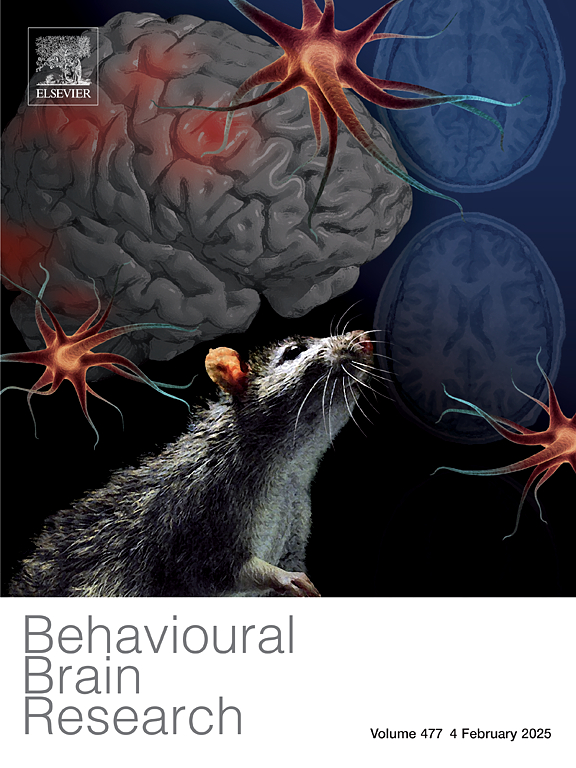Exploring virtual reality as an anxiety-inducing paradigm: Multimodal insights from subjective, behavioral and neurophysiological measures
IF 2.6
3区 心理学
Q2 BEHAVIORAL SCIENCES
引用次数: 0
Abstract
Anxiety results from the complex interplay between innate defensive responses to perceived threats and higher-order cognitive processes, mediated by specialized circuits in the human neocortex. Traditional methods of anxiety induction often fail to replicate the inherent unpredictability of threats or maintain ecological validity, thereby limiting their ability to fully elucidate the underlying mechanisms of anxiety. To overcome these limitations, this study aimed to explore the effectiveness of virtual reality (VR) as an innovative anxiety-inducing tool. By further using its ability to simulate real world scenes, the neural activities inducing anxiety in VR scenes were studied. VR is used to induce anxiety through customized scenarios, while a range of data, including subjective self-reports, objective performance measures, eye movement data, and EEG signals, are collected. The findings indicate that VR is efficacious in induced anxiety, which manifests through the arousal of anxious emotions, alterations in cognitive processes, and distinct neurophysiological patterns, particularly increased theta and alpha activity in the frontal and parietal regions. This research reinforces the ecological validity of VR as a research tool, contributing to a deeper understanding of the neurophysiological basis of anxiety and providing a more nuanced framework for both anxiety research and interventions in real-world contexts.
探索虚拟现实作为一种焦虑诱导范式:从主观,行为和神经生理测量的多模态见解
焦虑是对感知到的威胁的先天防御反应和高阶认知过程之间复杂的相互作用的结果,由人类新皮层的专门电路介导。传统的焦虑诱导方法往往无法复制威胁固有的不可预测性或维持生态有效性,从而限制了它们充分阐明焦虑潜在机制的能力。为了克服这些局限性,本研究旨在探索虚拟现实(VR)作为一种创新的焦虑诱导工具的有效性。进一步利用其模拟现实世界场景的能力,研究了虚拟现实场景中诱发焦虑的神经活动。VR通过定制场景诱导焦虑,同时收集一系列数据,包括主观自我报告、客观表现测量、眼动数据和脑电图信号。研究结果表明,VR对诱发性焦虑有效,表现为焦虑情绪的唤醒、认知过程的改变和不同的神经生理模式,特别是额叶和顶叶区域θ和α活动的增加。这项研究强化了虚拟现实作为一种研究工具的生态有效性,有助于更深入地了解焦虑的神经生理基础,并为现实环境中的焦虑研究和干预提供更细致入微的框架。
本文章由计算机程序翻译,如有差异,请以英文原文为准。
求助全文
约1分钟内获得全文
求助全文
来源期刊

Behavioural Brain Research
医学-行为科学
CiteScore
5.60
自引率
0.00%
发文量
383
审稿时长
61 days
期刊介绍:
Behavioural Brain Research is an international, interdisciplinary journal dedicated to the publication of articles in the field of behavioural neuroscience, broadly defined. Contributions from the entire range of disciplines that comprise the neurosciences, behavioural sciences or cognitive sciences are appropriate, as long as the goal is to delineate the neural mechanisms underlying behaviour. Thus, studies may range from neurophysiological, neuroanatomical, neurochemical or neuropharmacological analysis of brain-behaviour relations, including the use of molecular genetic or behavioural genetic approaches, to studies that involve the use of brain imaging techniques, to neuroethological studies. Reports of original research, of major methodological advances, or of novel conceptual approaches are all encouraged. The journal will also consider critical reviews on selected topics.
 求助内容:
求助内容: 应助结果提醒方式:
应助结果提醒方式:


